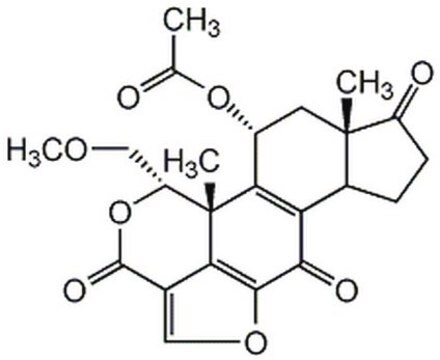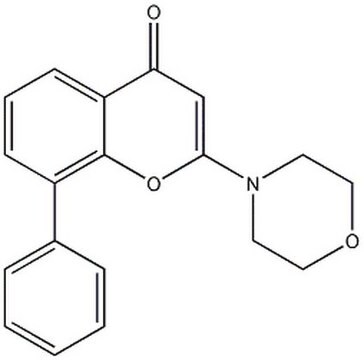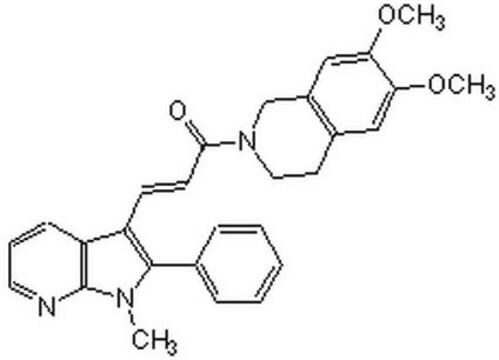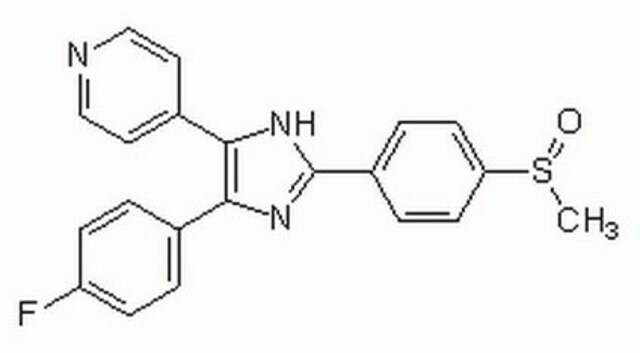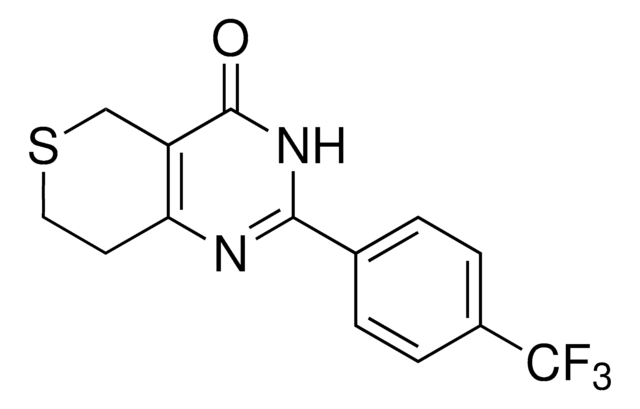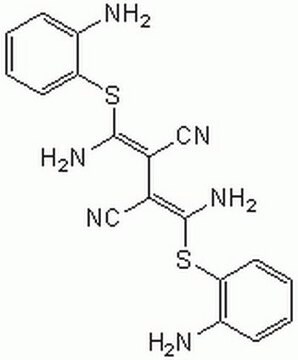440202
LY 294002
≥98% (HPLC), solid, PI3K inhibitor, Calbiochem®
Sinonimo/i:
LY 294002, 2-(4-Morpholinyl)-8-phenyl-4H-1-benzopyran-4-one, BRD2 Inhibitor IV, BRD3 Inhibitor III, BRD4 Inhibitor IV
About This Item
Prodotti consigliati
Nome del prodotto
LY 294002, LY294002, CAS 154447-36-6, is a cell-permeable, potent, reversible, and specific inhibitor of PI 3-kinase ((IC₅₀ = 1.4 µM). Acts on the ATP-binding site.
Livello qualitativo
Saggio
≥98% (HPLC)
Stato
solid
Produttore/marchio commerciale
Calbiochem®
Condizioni di stoccaggio
OK to freeze
protect from light
Colore
off-white
Solubilità
DMSO: 20 mg/mL
ethanol: soluble
Condizioni di spedizione
ambient
Temperatura di conservazione
−20°C
Stringa SMILE
N4(CCOCC4)c1[o]c2c([c](c1)=O)cccc2c3ccccc3
InChI
1S/C19H17NO3/c21-17-13-18(20-9-11-22-12-10-20)23-19-15(7-4-8-16(17)19)14-5-2-1-3-6-14/h1-8,13H,9-12H2
CZQHHVNHHHRRDU-UHFFFAOYSA-N
Descrizione generale
Azioni biochim/fisiol
Phosphatidylinositol 3-kinase
Attenzione
Nota sulla preparazione
Ricostituzione
Altre note
Bechard, M., and Dalton. S. 2009. Mol. Cell. Biol.29, 2092.
Lianguzova, M.S. et al. 2007. Cell Biol. Int.31, 330.
Baumann, P., and West, S.C. 1998. Proc. Natl. Acad. Sci. USA 95, 14066.
Cardone, M.H., et al. 1998. Science282, 1318.
Vlahos, C.J., et al. 1995. J. Immunol.154, 2413.
Yano, H., et al. 1995. Biochem. J.312, 145.
Vlahos, C.J., et al. 1994. J. Biol. Chem.269, 5241.
Selected Citations
Lee, J., et al. 2009. Cell Stem Cell5, 76.
Note legali
Codice della classe di stoccaggio
11 - Combustible Solids
Classe di pericolosità dell'acqua (WGK)
WGK 2
Punto d’infiammabilità (°F)
487.4 °F
Punto d’infiammabilità (°C)
253.0 °C
Certificati d'analisi (COA)
Cerca il Certificati d'analisi (COA) digitando il numero di lotto/batch corrispondente. I numeri di lotto o di batch sono stampati sull'etichetta dei prodotti dopo la parola ‘Lotto’ o ‘Batch’.
Possiedi già questo prodotto?
I documenti relativi ai prodotti acquistati recentemente sono disponibili nell’Archivio dei documenti.
I clienti hanno visto anche
Il team dei nostri ricercatori vanta grande esperienza in tutte le aree della ricerca quali Life Science, scienza dei materiali, sintesi chimica, cromatografia, discipline analitiche, ecc..
Contatta l'Assistenza Tecnica.


